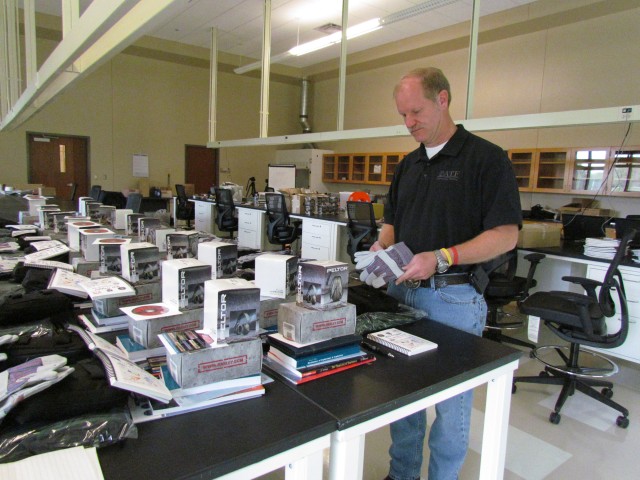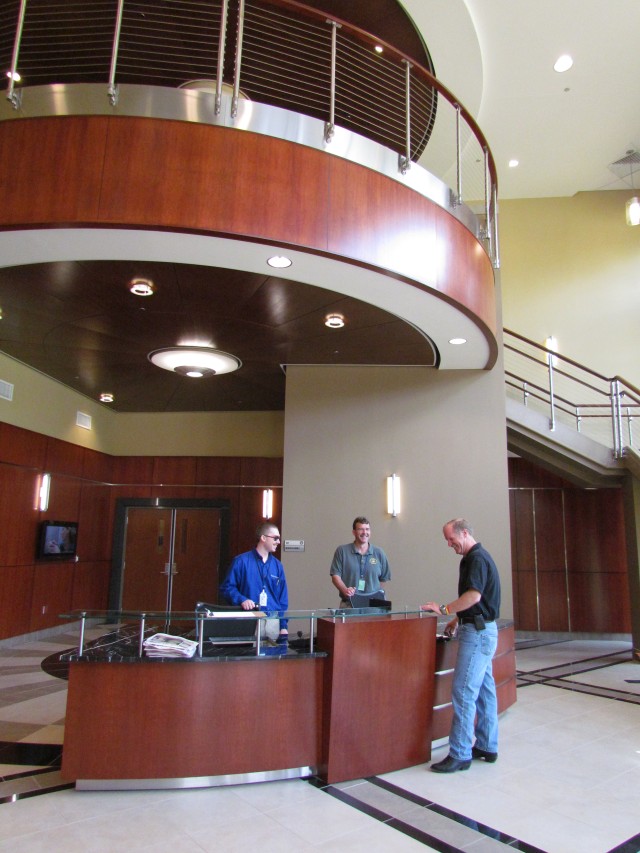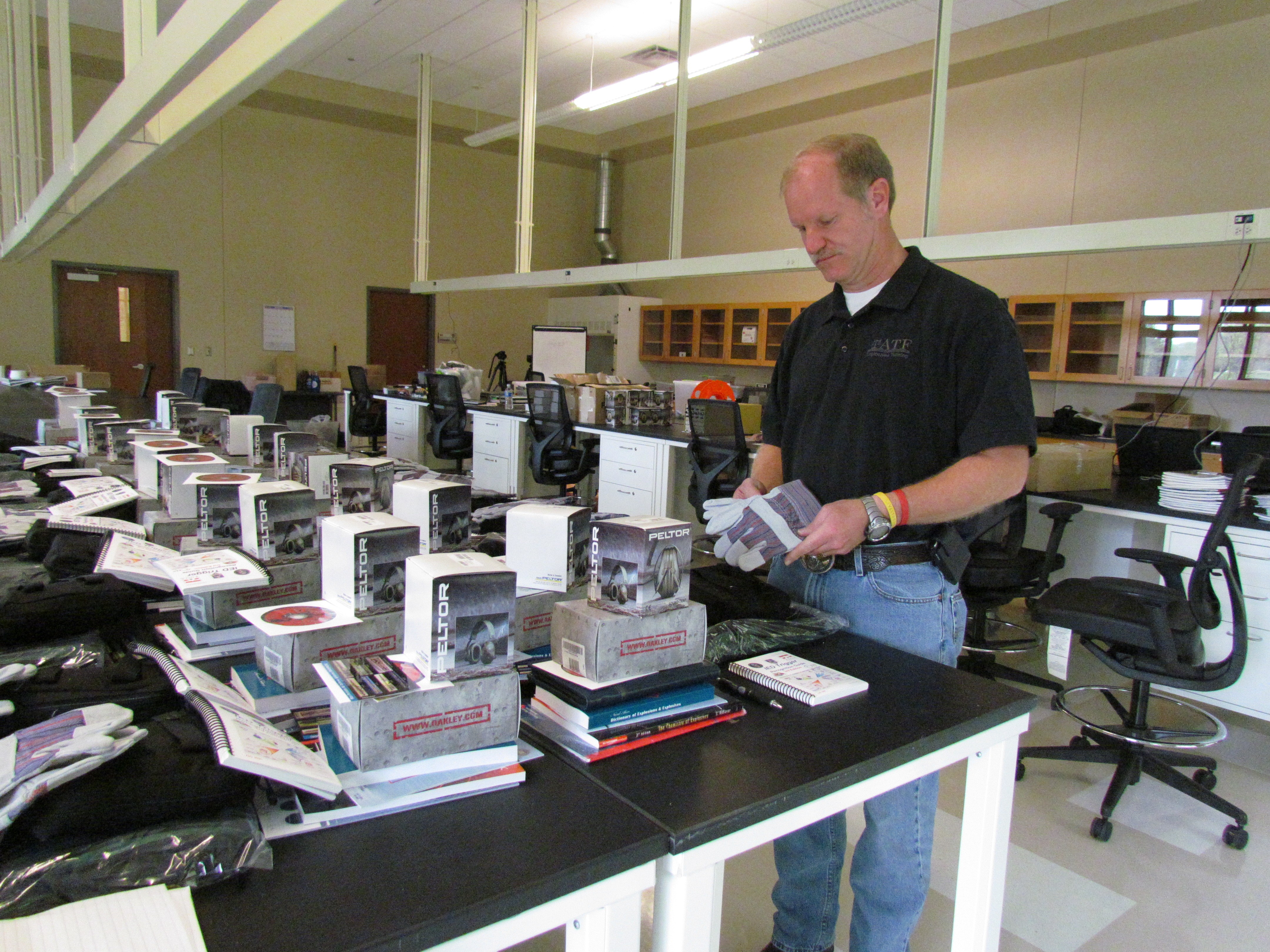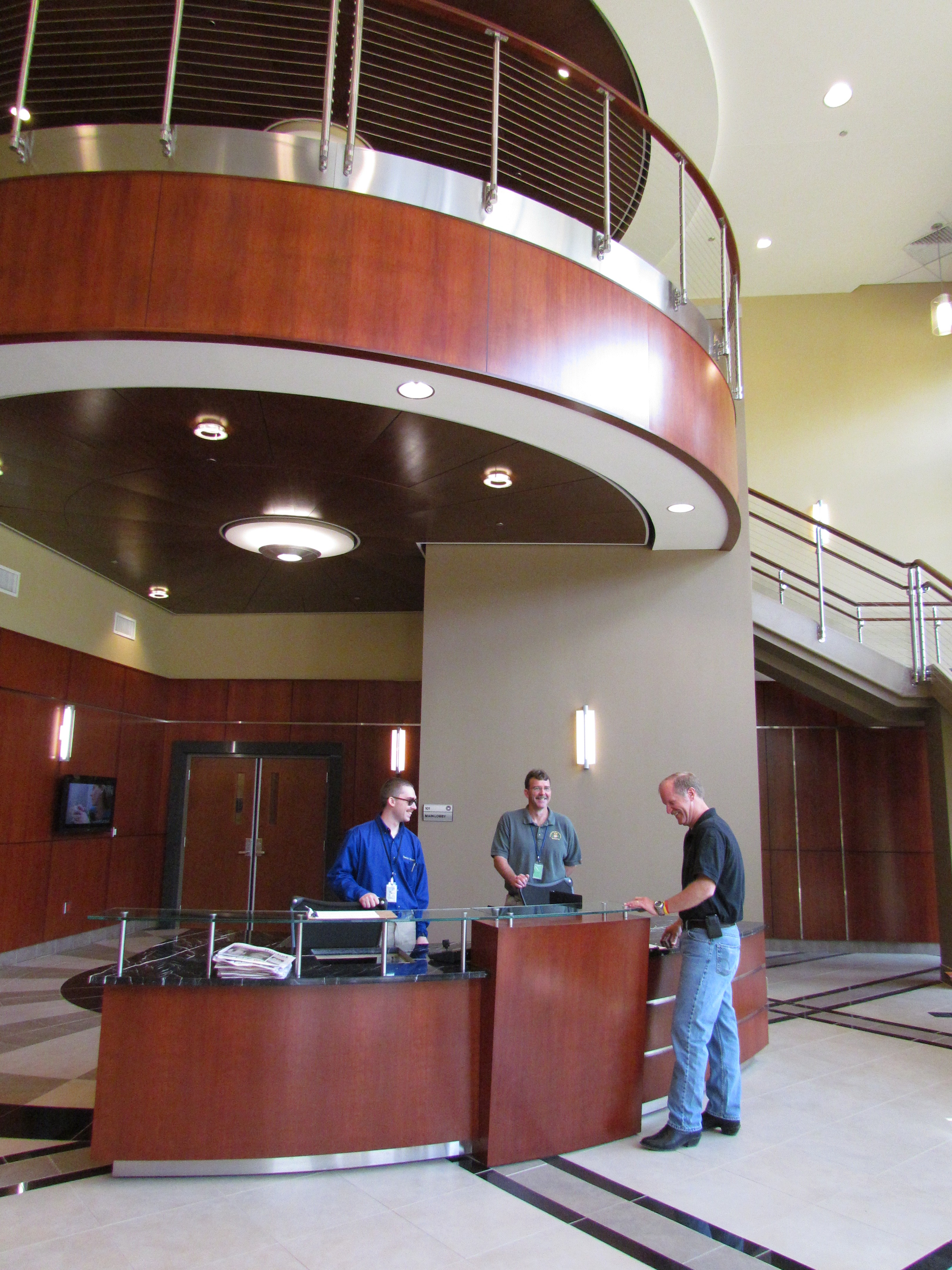REDSTONE ARSENAL, Ala.--Consider this your official introduction to the National Center for Explosives Training and Research on Redstone Arsenal.
The $30 million facility, the headquarters for the Explosives Training Branch of the Bureau of Alcohol, Tobacco, Firearms and Explosives, opened its doors on Patton Road last fall, following two years of construction that began with a Nov. 6, 2008 groundbreaking attended by Sen. Richard Shelby.
"This is a great building. We are very proud of it," special agent Jeff Groh, chief of ATF's Explosives Training Branch, said. "It has always been my desire to fulfill the obligation we gave to Sen. Shelby when he helped us get the funding we needed for this facility. He is an outstanding advocate of collaboration and getting explosive assets in one location so that we can all work together and benefit from each other."
But no ribbon cutting has been planned for the new facility. Rather, it's on to doing the Department of Justice's business in providing explosives training for ATF personnel as well as for law enforcement and other first responders; promoting and conducting research to improve the ability of ATF and its partners to investigate bombings; preventing diversion of explosives from legal commerce to the black market; and ensuring the safe, secure storage of explosives.
And Redstone Arsenal is just the place for accomplishing this mission.
"This is a great place for us to be," Groh said. "We have certain parameters of what we do and Redstone Arsenal could meet all those parameters. Redstone Arsenal won as our new facility very easily.
"This is a secure location and that was an asset to our agency. The space we needed was here as well as the synergy created by being located near the (FBI's) Hazardous Devices School and near such research entities as the Missile and Space Intelligence Center, Defense Intelligence Agency and the Aviation and Missile Research Development and Engineering Center."
Redstone competed against two other top installations under consideration - Camp Dawson, W.Va., and the Explosives Training Branch's previous home at Fort A.P. Hill in Bowling Green, Va.
"All the things going on here at Redstone fit pretty much hand-in-hand with what we are doing, and the collaboration is outstanding because of that," Groh said. "It really was a no-brainer for us. The willingness by the Redstone Garrison to have us here combined with the bunkers for explosives storage, the places to build ranges and the 26-acre location for our building all worked in Redstone's favor."
ATF first approached the Garrison in February 2006 to find a location on Redstone that would be suitable for its new facility.
"They advised us on where we should be located, and they were very helpful and supportive with our project," Groh said. "The Garrison and its Directorate of Public Works was very open and willing to assist us and get things done."
The center offers advanced training in bombing investigations and explosives disposal to local, state, federal and military students, as well as to ATF certified explosive specialists and industry operations investigators. Through its partnership with the Department of Defense Joint Improvised Explosives Devices Defeat Organization, ATF shares its expertise with U.S. military bomb technicians before and during their deployments overseas.
"ATF has been in the explosives business for 40 years and its mission is very unique," Groh said. "We cover everything from licensing and storage of explosives up to the disposal of dangerous explosives. We also maintain the bomb data center for the national and international explosives community right here at our new facility. Our labs handle more explosive incidents than any other agency. We have a very unique capability and Huntsville is the place to bring all our assets together."
Today, 15 ATF employees are housed in the 9,000-square-foot training center, which includes four stadium classrooms, four multipurpose classrooms, a mock courtroom, research and classroom laboratories, a 75-person conference auditorium and office space. Eventually, the facility will be the headquarters for 63 ATF employees and include partners from other government agencies and the private sector involved in law enforcement and explosives training.
Those facilities are all needed because the training center provides instruction in such areas as advanced explosives, investigations, pre-blast and post-blast forensics. Because they are a Department of Justice bureau, the ultimate focus of training operations is on investigation, identification of suspects and then prosecution of cases. Once it is operating at full capacity, the center's classrooms will be filled with law enforcement, emergency and military students as well as prosecutors from around the world.
In addition, the training center will be in control of three explosives ranges on the Arsenal. Since 2008, it has been using the 160-acre Corkern Range (referred to by AFT as Riverside North and Riverside South), and is currently building observation areas and other facilities on the range. It will also use the 573-acre McKinley Range once all training activities associated with the Ordnance Munitions and Electronics Maintenance School are moved by the end of the summer to the school's new home at Fort Lee, Va.
"We can run these ranges simultaneously and they can handle all of our explosives training, from homemade explosives training to advanced explosives destruction training," Groh said.
"We focus a lot of our training on how to get rid of explosives and render them safe because more bomb techs are killed doing those things than anything else. We also do a lot of post-blast training where we take real incidents that have taken place throughout the United States and we duplicate them so that our students can try to figure them out."
Besides U.S. law enforcement, emergency personnel and servicemembers, the training center also provides courtroom training for attorneys involved in the prosecution of explosives cases. It also trains law enforcement from foreign countries, including Mexico, Afghanistan, South Africa, Hungary, Romania, Czech Republic, El Salvador and Colombia.
"We will be welcoming a lot of foreign students to our facility for training," Groh said. "Since we've been here, we've already had students from Mexico and the Czech Republic. Those training requests have to go through the U.S. State Department before training can be approved."
But the training center doesn't want to go afar for all its students. It also wants to work closely with the local law enforcement to provide them with explosives training.
"It is our job to expose law enforcement to the hazards of explosives and provide them with the training they need to handle and disarm explosives safely," Groh said. "We want to be a partner with the local law enforcement agencies."




Social Sharing